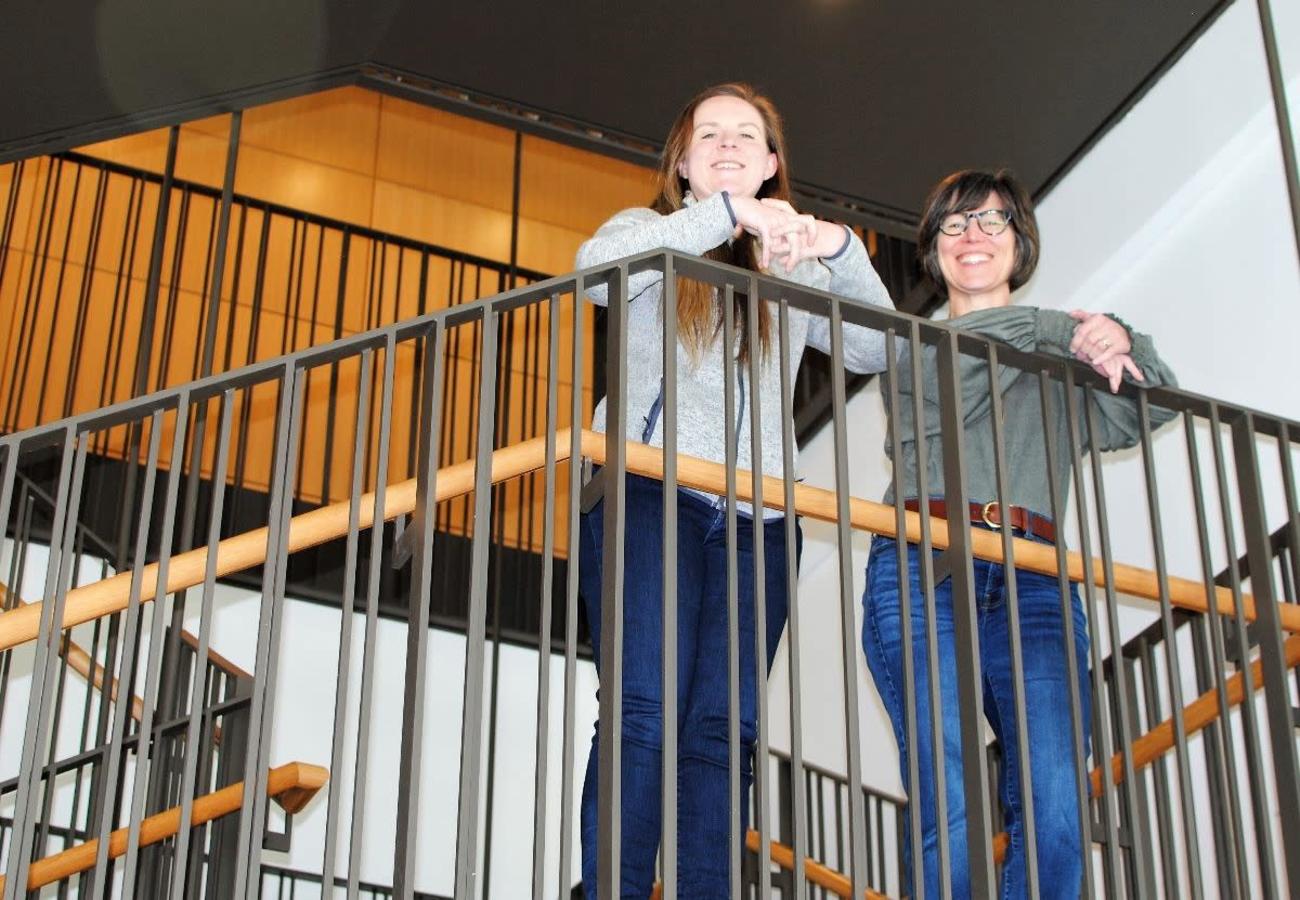 Drs. Emma Wrenn (left) and Elizabeth Lawlor: 'You stay the course, you show up every day, and you grind it out. You gain confidence and, eventually, the fear begins to dissipate.'
Drs. Emma Wrenn (left) and Elizabeth Lawlor: 'You stay the course, you show up every day, and you grind it out. You gain confidence and, eventually, the fear begins to dissipate.'
Emma Wrenn’s mother probably was concerned when her daughter, then six-years-old, brought home a spider’s nest Emma had found in a ravine near their home in north Seattle. But a few days later Mrs. Wrenn likely was aghast when, suddenly, several new eight-legged creatures joined the family.
It also foretold Emma would become intrigued with science.
More than 20 years later, that intrigue has evolved into an uncompromising commitment to understand how some tumor cells metastasize, some do not, and why. Wrenn, now 30, has studied and conducted research at all three BBI institutions: UW Medicine, the Fred Hutchinson Cancer Center, and Seattle Children’s.
She completed her Ph.D. in Molecular and Cellular Biology in 2021; eight months later as a post-doc she joined the lab of BBI’s Dr. Elizabeth Lawlor, a principal investigator and associate director of the Ben Towne Center for Childhood Cancer Research at Seattle Children's Research Institute.
“Emma really hit the ground running from day one” said Lawlor, who also serves as a professor of pediatrics at the UW. “Her deep knowledge of the fundamental biology of metastasis in breast cancer has informed many projects in my lab. In addition, Emma is a very resourceful scientist and she has continued to develop her knowledge and skills through collaborations that have amplified the impact of our work.”
That work currently focuses on understanding Ewing sarcoma, a rare type of cancer that most commonly arises in bones or in soft tissue surrounding bones. Wrenn is examining how tumor heterogeneity and interactions with normal cells, molecules, and blood vessels affect the cancer’s progression. About half of all Ewing sarcoma tumors occur in children and young adults between ages 10 and 20. The five-year survival rate is about 63 percent, according to the American Society of Clinical Oncology.
Although there are themes related to the breast cancer research Wrenn conducted for her Ph.D., Ewing sarcoma represents “a whole new area of science that’s exciting and fresh,” she said. She and a colleague in Lawlor’s lab share the title of first author on a preprint paper released in April, “Carcinoma-associated fibroblast-like tumor cells remodel the Ewing sarcoma tumor microenvironment.”
Submitting scientific papers for peer review journals and conducting poster presentations at conferences may – or may not – have been on Wrenn’s mind when she entered Woodside Priory, a Catholic high school near Stanford University. (Her family moved to the Bay Area in 1999.) Her AP Biology course was taught by an elderly Hungarian monk.
“I learned biology with a bad Hungarian accent, but I didn’t realize it until I went to college,” she said. “I would speak up in class and my biology professors would respond, ‘What did you just say?’”
Those teachers at the University of California, Santa Barbara not only made sure Wrenn knew how to pronounce scientific terms correctly, they guided her through a senior honors thesis researching stable cell lines with clinically relevant mutations in the gene causing polycystic kidney disease.
She also gained technical skills in the areas of: mammalian cell culture; molecular cloning; and SDS-PAGE, a process by which proteins are separated based on differences in their weight stimulated by electric fields. In December of 2014, Wrenn completed a Bachelor of Science degree in Biological Sciences with high honors.
Nine months later, she returned to Seattle for graduate school. Like other Ph.D. candidates she jumped on a six-year treadmill of course work, lab work, research, scientific writing, and poster presentations.
“The Fred Hutch offers a phenomenal program, as challenging as it was rewarding,” Wrenn said. “There were great people doing great science and that was exciting. But I was a bit naïve at first. I didn’t know how much I didn’t know. My brain was exploding. I had this imposter syndrome and it was intimidating.”
How did Wrenn overcome that intimidation?
“At some point you don’t have a choice,” she said. “You stay the course, you show up every day, and you grind it out. You gain confidence and, eventually, the fear begins to dissipate.”
The completion of her Ph.D. was followed by six months of travel and much needed rest before confronting head on the question she and all other post-docs face: What’s next?
“When I started looking for a job, three separate people said, ‘You have to talk to Beth Lawlor, she would be perfect for you,’” Wrenn said. “I applied to her lab, and contacted her. After visiting the lab and interviewing with her, we really ‘clicked.’ It was the only job I applied for and it turned out to be much shorter job hunt than I anticipated.”
The Wrenn-Lawlor collaboration started in November of 2021. It is quite evident that a year and a half in, the latter half of that partnership is pleased.
“Emma’s relentless curiosity and commitment to scientific rigor are two of her greatest strengths,” Lawlor said. “She always follows the data even if it takes her somewhere unexpected. This overriding commitment to discovering and advancing truth earns her the respect and trust of her peers as well as more junior and senior colleagues.”
Wrenn’s commitment to the truth may be matched only by a desire to help others.
“It’s hard to work at a place like Seattle Children’s and not feel a desire to help others,” she said. “Science can be hard and progress sometimes feels slow. When you’re feeling frustrated and all of your experiments are failing, you can say to each other, ‘We’re all trying to help sick kids with cancer.’ It’s hard to think of anything more motivating that that.”


